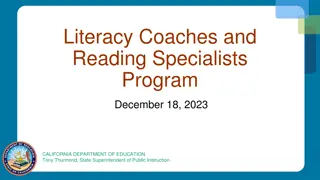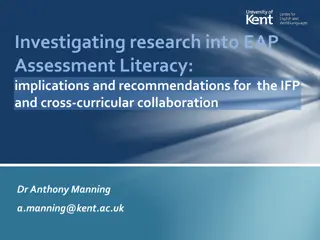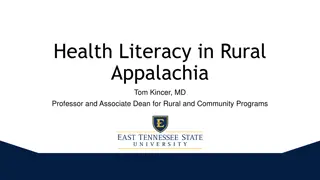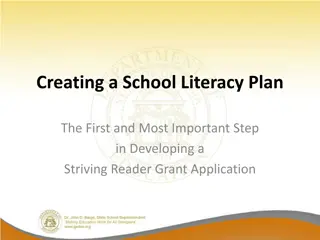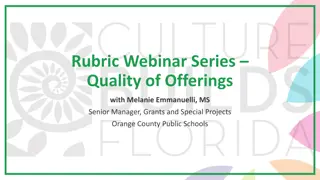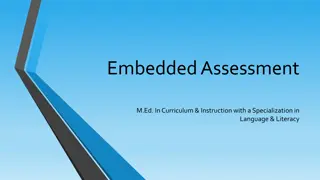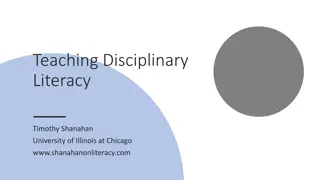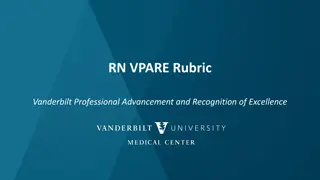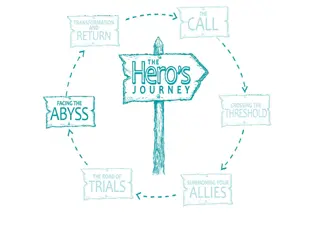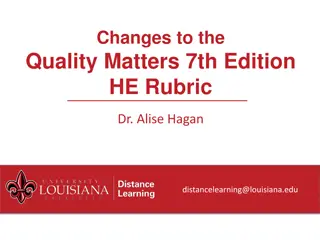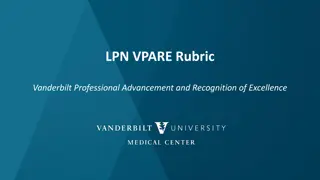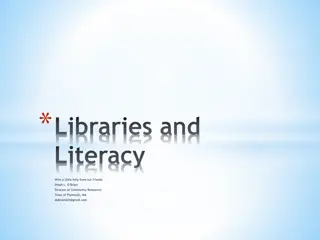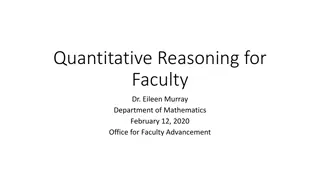Developing Rubric for Quantitative Literacy Assessment
Faculty at WOU recommended adopting LEAP's learning outcomes, including Quantitative Literacy (QL). QL is a vital competency for reasoning and solving numerical problems in varied contexts. The task involved creating a rubric to assess QL in general education for BA and BS students, focusing on interpretation, representation, calculation, application/analysis, assumptions, and communication.
Download Presentation

Please find below an Image/Link to download the presentation.
The content on the website is provided AS IS for your information and personal use only. It may not be sold, licensed, or shared on other websites without obtaining consent from the author.If you encounter any issues during the download, it is possible that the publisher has removed the file from their server.
You are allowed to download the files provided on this website for personal or commercial use, subject to the condition that they are used lawfully. All files are the property of their respective owners.
The content on the website is provided AS IS for your information and personal use only. It may not be sold, licensed, or shared on other websites without obtaining consent from the author.
E N D
Presentation Transcript
LEAP In November, Faculty Senate recommended that WOU adopt LEAP's (Liberal Education & America's Promise) learning outcomes. One of those learning outcomes is Quantitative Literacy
Quantitative Literacy Quantitative Literacy (QL) is a 'habit of mind' competency, and comfort in working with numerical data. Individuals with strong QL skills possess the ability to reason and solve quantitative problems from a wide array of authentic contexts and everyday life situations. They understand and can create sophisticated arguments supported by quantitative evidence and they can clearly communicate those arguments in a variety of formats (using words, tables, graphs, mathematical equations, algorithms, etc., as appropriate). (AACU).
My Task This year I was tasked with developing a rubric that supports assessment of quantitative literacy in general education for both Bachelor of Arts and Bachelor of Science students at WOU. I sought to identify elements of quantitative literacy that are most important to faculty and the levels of competency that are expected in general education from BA and BS graduates.
QL LEAP Rubric Categories Interpretation Representation Calculation Application/Analysis Assumptions Communication
Interpretation Competency Levels 4 Provides accurate explanation of information presented in mathematical forms. Makes appropriate inferences based on that information. 3 Provides accurate explanations of information presented in mathematical forms. 2 Provides somewhat accurate explanations of information presented in mathematical forms, but occasionally makes minor errors related to computations or units. 1 Attempts to explain information presented in mathematical forms, but draws incorrect conclusions about what the information means.
Bachelor of Arts The general education course with QL that students consistently while seeking a BA is MTH 105 Introduction to Contemporary Mathematics So I spoke with the MTH 105 team to develop a QL rubric for general education for BA students
Bachelor of Science There are many stakeholders of QL in general education for BS students I sent out a survey to 48 faculty members Math department CS department Dean Monahan s QL group Anyone identified by their division chair as being a stakeholder in QL
Reponses by Discipline Computer Science 10% Geography 3% Mathematics 27% Theatre 3% Politic, Policy & Administration 4% English 3% Business & Economics 3% Other 15% Criminal Justice 7% No Response 3% Exercise Science 3% Psychology 17% Science 17%
Survey The survey asked to rate the importance of each LEAP rubric category It asked the level of competency expected in each category in general education from a BS graduate It asked if there was any elements of QL missed in the LEAP rubric
Results With 5 being very important, 3 being moderately important, and 1 being not important, each category had a mean between 4 and 4.5 In each category, the faculty seemed to mostly agree on a competency level There wasn t a common thread in the comments about any missed elements on the QL rubric
Thank you for listening Questions?


